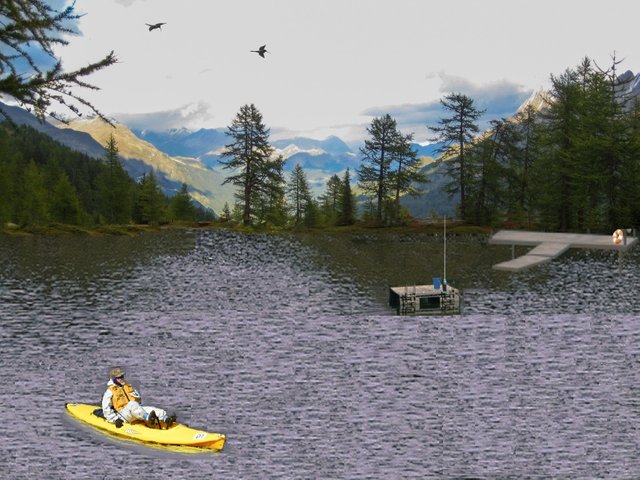
We tend to think of land and water forms, of bogs and swamps and ponds, as established states. But the pictures above and below demonstrate that they are not. They're just stages in an ecological evolution. The evolution may take hundreds of years and may vary depending on environment, but it is a recognized process called pond succession.
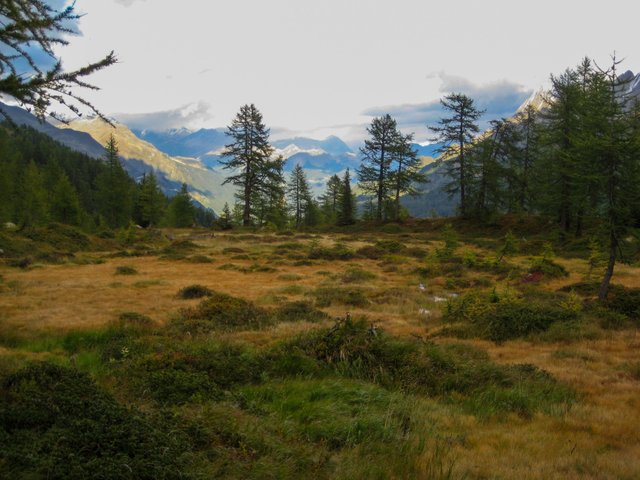
___________________________________
___________________________________
Each week, @shaka offers one of his beautiful pictures and invites us to make from that a unique collage. The second picture, with grass, trees and mountains in the background is @shaka's photo for this week. My idea for this blog and for the collage evolved together.
The top picture, with a lake and a forest backdrop, originally represented my entry into @shaka's #letsmakeacollage contest.
I've had to change my entry because of copyright considerations. The actual entry, which is not my preferred picture, is this:
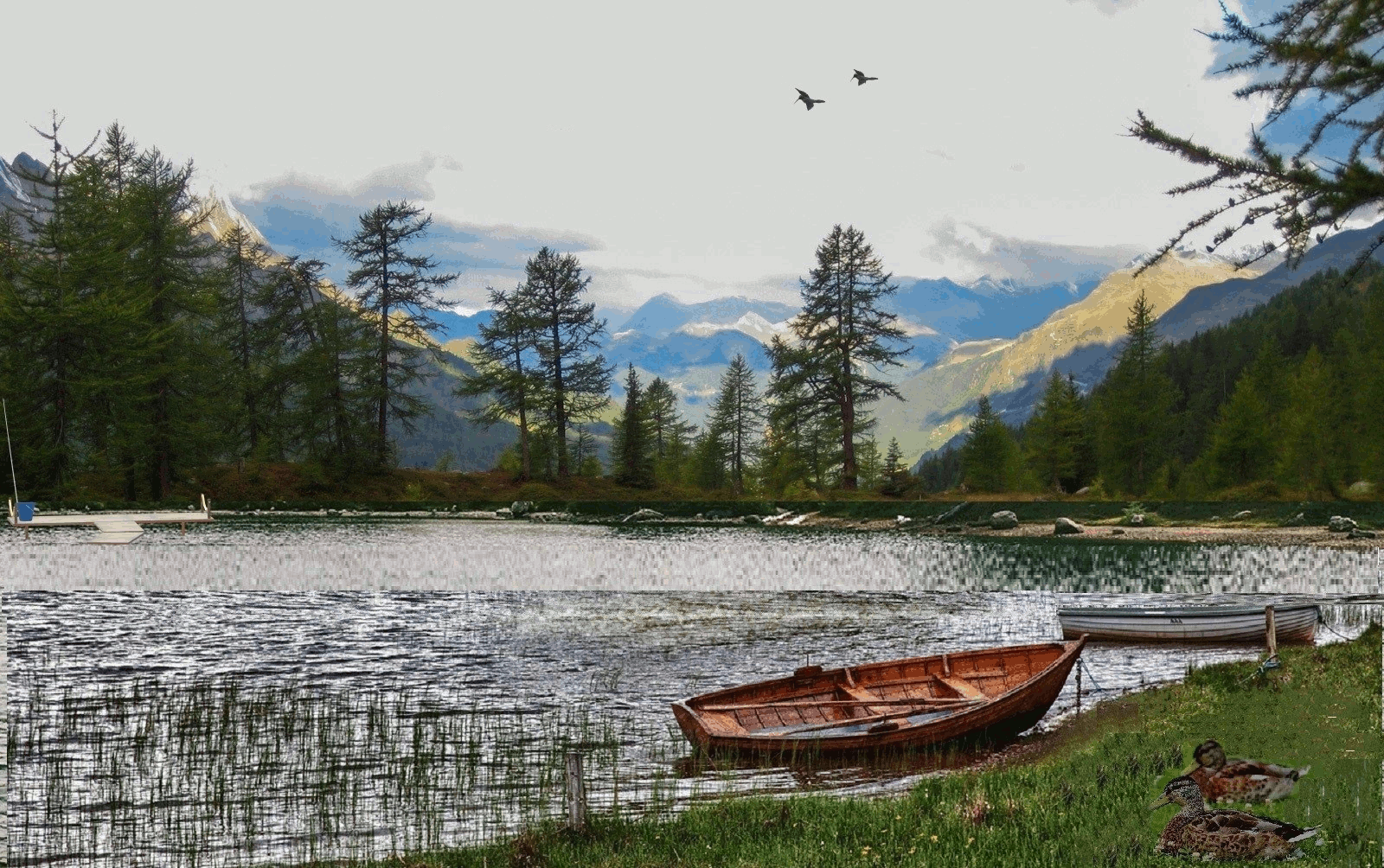
There are no copyright restrictions at all on this picture. The list of Pixabay credits is given at the end of the blog.
Lakes, Ponds, Wetlands and Forests
Is It a Pond, or Is It a Lake?
In everyday terms, it seems there is little difference between a lake and a pond. These words are used interchangeably, with most people considering lakes to be larger and deeper than ponds. However, limnologists, those who study inland bodies of water, are more precise in their terminology. A major distinction between a pond and lake is water flow. Water that flows in a "continuous and definite direction" makes up a lake, and water that does not makes up a pond.
By definition, a lake or pond is a body of water that is surrounded by land. This body of water may be huge, like the Caspian Sea, or it may be small, like the local neighborhood skating pond.
Open Lakes and Closed Lakes
The Great Salt Lake
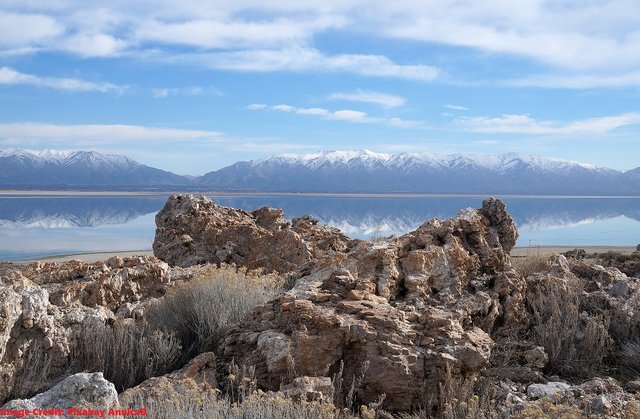
Ever wonder how the Great Salt Lake (North America) or the Dead Sea (Asia) became so salty? Both bodies of water are "closed lakes", which means water only drains from them through evaporation. Lakes that drain through streams are called open lakes. Over time, a closed lake becomes increasingly saline. The salt flats around the Great Salt Lake are areas where the water has completely evaporated and left only salt. And at its deepest, the Dead Sea is so saline that the water can hold no more and the salt collects on the bottom of the lake.
The Caspian Sea, The Beach of Astara in the Morning
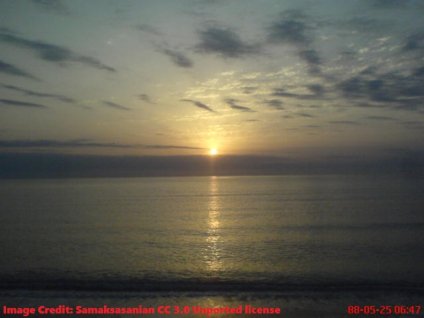%20Samaksasanian%203.0%20unported.jpg)
The Caspian Sea is the largest salt lake in the world. Although it is now landlocked, there was a time when the Caspian Sea had outlets to other bodies of water. Significant fresh-water rivers, such as the Volga, feed into the Caspian and this infusion tends to moderate its salinity.
Creation of a Lake/Pond
A lake, or pond, begins with a depression in the earth. This depression may be created by a variety of events--perhaps a crater was formed by a falling meteor, or a gash was carved out by a receding glacier. However it came to be, the depression fills with water. This water may be from rain, melting ice or underground streams. Some inland bodies of water are derived from other sources, such as damming and flooding.
Pond Succession
It may take hundreds of years for a primitive pond to go through successive stages until it eventually becomes terrestrial. A great YouTube video shows the different stages of succession.
The earliest life forms to populate a primitive pond are called pioneers. According to environmental scientist Paul Conti, the environment in the pond at this stage is "nutrient poor". As early life forms die and fall to the bottom, however, nutrients are introduced and greater life forms may be supported. These also mature and fall to the bottom. Over the years larger plants and soil are deposited so that the pond fills up, until soil forms. At this stage, the pond may look like the second picture on this page, @shaka's picture.
This process of pond succession may be sped up by human activity. It also may be sped up by other factors, such as beavers. Beavers have been called ecological engineers, because of their role in transforming land.
The Eurasian Beaver
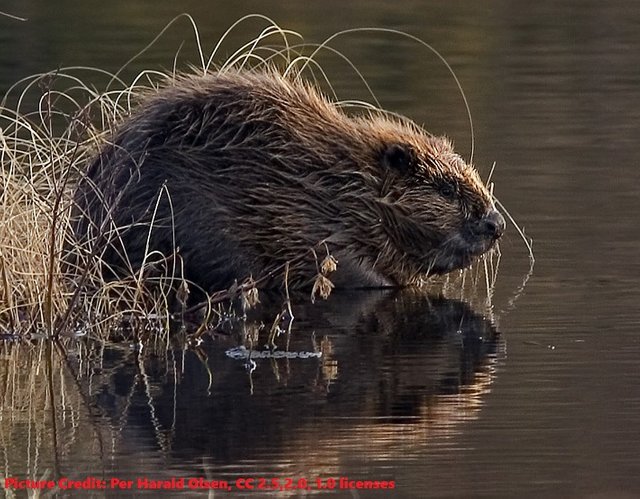
The intermediate stage between a pond and a forest or grassland, is a wetland. There are various types of wetland. I believe the picture offered by @shaka most closely resembles a bog, a highly acidic wetland. Bogs may be home to life that tolerates acidic conditions, such as evergreens, shrubs and certain kinds of berries and flowers. Some mammals, such as beaver and moose, may also find a hospitable home in a bog.
A Bog in Iron County, Michigan, USA
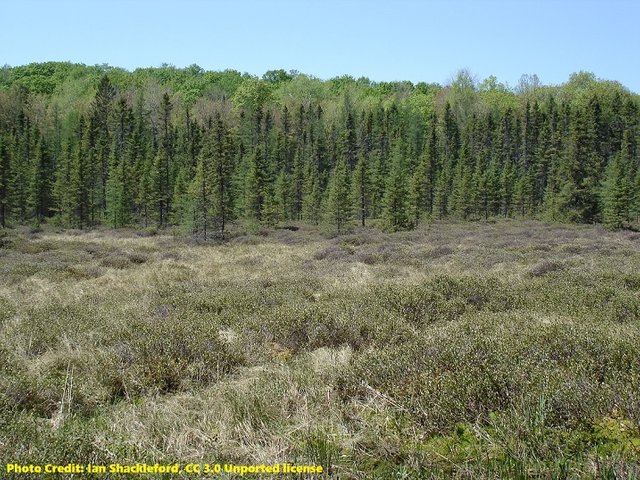%20Ian%20Shackleford%203.0.jpg)
One curious aspect of bogs is their ability to preserve fossils. Because the environment is so oxygen poor, decomposing bacteria do not thrive. Even soft tissue from dinosaurs and prehistoric hominids has been discovered in bogs.
Swamp: A Wetland Between Pond and a Terrestrial Community
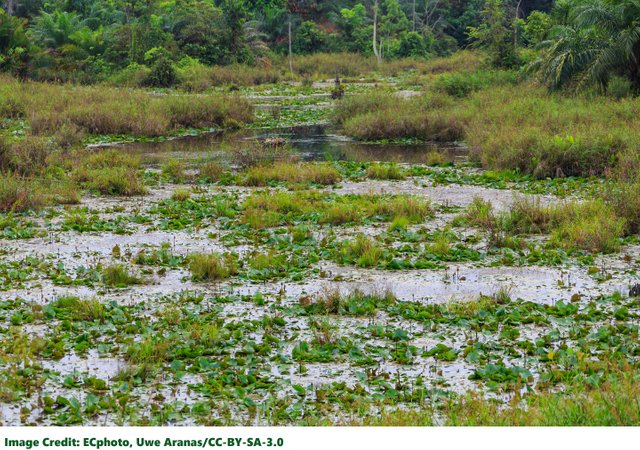
This picture was taken in Keningau District, Sabah State, Malaysia. A swamp, as contrasted with a bog, is a wetland that is permanently saturated and has trees. There are saltwater and freshwater swamps. Because these are transitional (from pond to land), they are neither all water nor all soil. Both fresh and saltwater swamps are very bio diverse. As a matter of fact, saltwater swamps, which are generally found in coastal areas, are sometimes called the nurseries of the ocean.
Climax Community
There is a point in ecological succession in which a certain stability is achieved, in which no significant changes will occur, unless there is interference. This is called a climax community. Old growth forests are climax communities. A significant change in an old growth forest would be logging.
Old Growth Forest
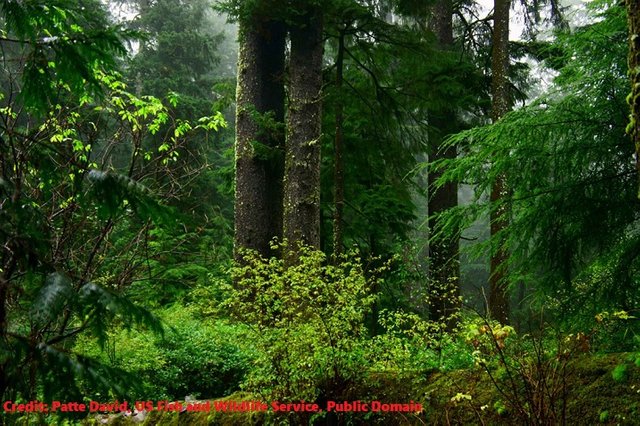
My Collage, and This Blog
When I first saw @shaka's picture I thought of my childhood and the days I spent wandering around the forest, which was behind my home. The swamp I remember was more sinister--more mud, more water, denser overgrowth. So I began to read about swamps and wetlands. I discovered a bit about how swamps and wetlands came to be. That's when the idea for my collage came to me.
Top Picture Genesis:
Part 1: Find the water
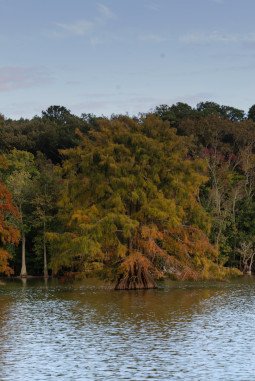
Randy Everette CC 3.0 Unported license
Part 2: Attach it to the backdrop, provided in @shaka's original photo.
Part 3: Put a few recreational items in the water.
The small swimming dock in the middle of the lake:
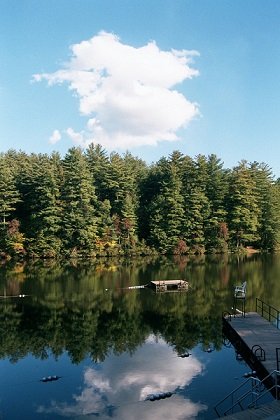
Pixabay license
And...
Add the large pier, fishing pole and bucket, life preserver: Paint 3D
Part 4: Find a human doing something recreational and put that human in the water.
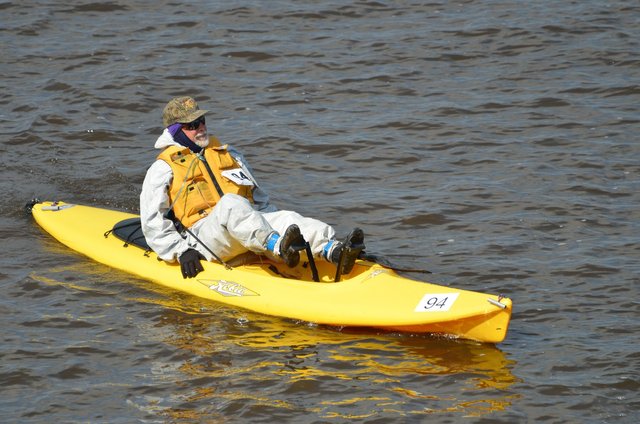
Pixabay: barryrjonesjr
Part 5: Put a couple of birds in the sky
Paint 3D
Part 6: Blend the edges of everything together, as much as possible.
GIMP and Paint
The second picture, my actual entry, is free of copyright restrictions.
Pixabay credits for my entry into @shaka's #letsmakeacollagecontest:
water
canoes: Frank Winkler
ducks: capri23auto
Other elements are from Paint 3D
If you haven't visited @shaka's #letsmakeacollage contest, you're missing out on something. It's fun to participate, and the entries are always creative. Every week someone does something brilliant.

In case you'd like to read more, here are a few resources I used in writing this blog. I recommend especially the YouTube video.
https://www.aslo.org/page/limnology
https://www.des.nh.gov/organization/commissioner/pip/factsheets/bb/documents/bb-49.pdf
https://www.nationalgeographic.org/encyclopedia/lake/
https://www.nationalgeographic.org/encyclopedia/lake/
https://www.britannica.com/place/Caspian-Sea
http://www.naturalhistorymag.com/features/112161/fate-of-the-caspian-sea
https://https://www.youtube.com/watch?=UsiEcapJ3KU
https://www.solitudelakemanagement.com/blog/the-stages-of-lake-and-pond-succession
http://www.beaversww.org/beavers-and-wetlands/articles/wetland-engineer/
https://www.wildlondon.org.uk/reserves/farm-bog
https://nhpbs.org/natureworks/nwep7f.htm
https://phys.org/news/2018-09-bogs-unique-history.html
The images really fit together, I like the collage!
Great informational story about the succession as well. Enjoyable as always :D
Downvoting a post can decrease pending rewards and make it less visible. Common reasons:
Submit
Thank you, @samve. So nice to see you here. I love playing with art, although I can't draw. Still waiting to see more of your sketches :)
Downvoting a post can decrease pending rewards and make it less visible. Common reasons:
Submit
One day I will get back to it! I already have a pile of fresh paper and sparsely touched supplies on my desk...
Downvoting a post can decrease pending rewards and make it less visible. Common reasons:
Submit
Find time for it! Even when I do it badly, I always come back feeling peaceful and refreshed :)
Downvoting a post can decrease pending rewards and make it less visible. Common reasons:
Submit
Beautiful, I hope to get to the USA someday.
Best
Chapper
Downvoting a post can decrease pending rewards and make it less visible. Common reasons:
Submit
Thank you so much! We have some beautiful scenery...as you do in Germany. I visited once, with my sister. Went on a car and train tour. Spectacular.
I see you have posted a blog about mitochondrial illnesses. I'm actually quite interested in that. Looking forward to the read.
Peace,
AG
Downvoting a post can decrease pending rewards and make it less visible. Common reasons:
Submit
Hey @agmoore,
where have you been to Germany?
Because of the Mitopost. It's gotten pretty long. Maybe you better wait for the English translation. At least if you don't have enough time to disentangle it.
Thanks & regards
Chapper
Downvoting a post can decrease pending rewards and make it less visible. Common reasons:
Submit
I went to Germany in 2000--my niece was getting married in Nancy so my sister and I made a three-week trip out of it. Since we have a distant ancestor who migrated to the US in 1837, we thought we'd make it a bit of a heritage tour out of it and fly into Germany. People in the US are always looking for the threads of heritage. It's a kind of hobby.
Anyway, we ended up seeing a bit of the Rhine valley and going to many cities, including Ulm (root of ancestor's home), Munich, Karlsruhe, Dusseldorf ,Saarbrucken--not in that order :) It was a remarkable trip.
I read your article...will comment under that. My German is getting better, but thank heavens for Google translate :)
Have the most wonderful, peaceful day.
AG
Downvoting a post can decrease pending rewards and make it less visible. Common reasons:
Submit
Haha, except München I never have been to the other cities before.
Therefore you saw more of Germany than me, I guess.
Maybe you visit us again one day.
Best
Chapper
Downvoting a post can decrease pending rewards and make it less visible. Common reasons:
Submit
I think my days of transatlantic flight are over. But I would love to :)
Downvoting a post can decrease pending rewards and make it less visible. Common reasons:
Submit
It looks so real I love it!
Posted using Partiko Android
Downvoting a post can decrease pending rewards and make it less visible. Common reasons:
Submit
Thank you! Was a lot of fun to make.
Downvoting a post can decrease pending rewards and make it less visible. Common reasons:
Submit
Hihi - this not only one post, but evan 2 in one! Typically you. Thank you for the details (lake, pnd...) and the making of (@shaka s contest). Great job as usually. ;-) Best regards Kadna
Downvoting a post can decrease pending rewards and make it less visible. Common reasons:
Submit
@kadna, you are good to me. I love to see you here. Yes, I am incorrigible 😁
Thank you for reading that long blog.
Downvoting a post can decrease pending rewards and make it less visible. Common reasons:
Submit
;-) i like reading your Posts
Ok, i will stop pointing at that point - be yourself ;-)
Downvoting a post can decrease pending rewards and make it less visible. Common reasons:
Submit
😇
Downvoting a post can decrease pending rewards and make it less visible. Common reasons:
Submit
Congratulations! Your post has been selected as a daily Steemit truffle! It is listed on rank 24 of all contributions awarded today. You can find the TOP DAILY TRUFFLE PICKS HERE.
I upvoted your contribution because to my mind your post is at least 4 SBD worth and should receive 184 votes. It's now up to the lovely Steemit community to make this come true.
I am
TrufflePig, an Artificial Intelligence Bot that helps minnows and content curators using Machine Learning. If you are curious how I select content, you can find an explanation here!Have a nice day and sincerely yours,

TrufflePigDownvoting a post can decrease pending rewards and make it less visible. Common reasons:
Submit
Thank you, @trufflepig. Let's hope you're right :)
Downvoting a post can decrease pending rewards and make it less visible. Common reasons:
Submit
Beautiful, I love nature!
Downvoting a post can decrease pending rewards and make it less visible. Common reasons:
Submit
Thank you!
Downvoting a post can decrease pending rewards and make it less visible. Common reasons:
Submit
Welcome! :D
Downvoting a post can decrease pending rewards and make it less visible. Common reasons:
Submit